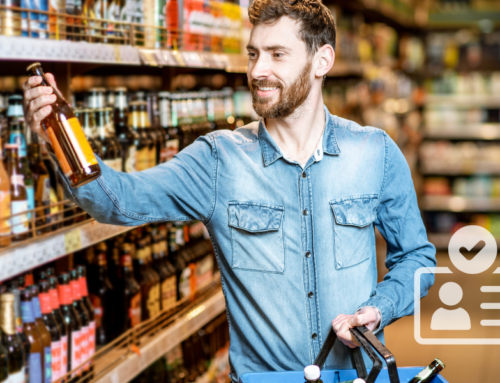Author
Tommy Chapman
Share
Key Retail Trends for 2022
As we approach the second anniversary of the first known case of covid-19 in the UK, it’s no surprise that online shopping still accounts for an enormous portion of retail sales. Despite a temporary dip in online sales as lockdowns came to an end and restrictions eased in Q3 of 2021, the holiday period and a significant increase in covid cases saw a return to the online store with eCommerce accounting for 25% of all sales at the beginning of Q4.
2020 – 2021 delivered the unexpected and retailers who were quick to react and adapt were largely successful in negotiating their way through an extremely precarious period. Technology played a huge part with new software, apps and hardware, and new uses for existing technologies helping to pave the way to success as we all got to grips with what became known as ‘the new normal’.
While we don’t have a crystal ball, research and a review of recent trends can offer an insight into what we can expect to see in 2022 and how retailers can prepare for what could be a third successive make or break year for many.
Here’s an indication of what we can expect in 2022…
A return to the high street
Despite a swathe of store closures there is a growing appetite among consumers and the general UK public to get back to normal, whatever that may be. Demonstrated by the return of high street footfall in Q4, shoppers were keen to get back into stores where they could enjoy the traditional Christmas shopping experience. While the Omicron variant put a damper on this trend in mid to late December, it goes to show that the high street is alive and kicking. Covid-willing, we can expect to see shoppers continuing to visit the high street and frequent traditional bricks and mortar stores as they strive to achieve relative normality.
Safety first

Unprecedented in-store safety measures became commonplace almost overnight when the pandemic first began. Social distancing, mask wearing, hand sanitiser stations and Perspex screens became the norm and remain so for many today. Social distancing in particular has led to a rethink of customer movement throughout physical stores. Many had to implement one-way systems and distanced queuing in order to help customers to feel safe.
While we all hope one day we’ll see an end to covid forever, it appears a step change in the psyche of the consumer means stores which put safety first will be one step ahead of their competitors.
Self-service and contact-free shopping
Research shows that up to a quarter of shoppers now use self-service checkouts which reduce face-to-face contact with cashiers. In fact, some stores have removed manned checkouts completely, opting instead to have a store assistant on-hand to verify purchases and support customers across multiple self-checkouts. And, with big brands like Amazon claiming till-less stores are the future, it seems self-service is just the beginning of a new advent of contactless shopping technology.
Contactless payments
Despite contactless payments being around for a few years, research shows that up to one third of adults had never used contactless cards prior to the pandemic. Contactless card usage has soared over the last couple of years, and, with mobile phone payments and wearable devices on the rise, cash payments have significantly diminished. As technology advances and new payment methods such as biometrics emerge, we can be sure of one thing, contactless is here to stay.
Continued reliance on online shopping
While there may be a desire to return to pre-pandemic ways of living, there is no denying that online shopping will continue to be a necessity for most. Those who are clinically vulnerable are likely to be advised to continue to exercise extreme caution in their daily lives, with those who are inherently cautious following suit.
Add to that the ongoing threat of new variants, waves of virus and whatever else 2022 might throw at us and it’s plain to see that online shopping is here to stay. However strong your desire to shop in store, it sadly may not always be possible in the coming year.
Free shipping and fast delivery as standard
As retailers have vied for business in a heavily competitive environment, one way to entice shoppers to purchase online has been to offer preferential delivery services such as free shipping or speedy delivery. The proliferation of special delivery services has led to the expectation of this as standard and research suggests that 90% of shoppers would shop online more often if shipping were free. What’s more, up to 25% of shoppers admit that they would actually spend more in order to qualify for free shipping.
Shipping itself has faced certain challenges in recent times, with a shortage of HGV drivers, Brexit and the global chip shortage all affecting stock levels and deliveries, offering expedited shipping alone may not be enough. While shipping backlogs may ease over time, retailers should ensure that they manage consumer expectations to avoid disappointment and negative feedback.
Social media to reach new heights in eCommerce
Instagram is by far the most retail-ified social network, closely followed by their cousin Facebook. Social commerce platforms allow you to target your chosen demographic with eye-catching, personalised advertising. Instagram offers an end-to-end eCommerce solution so users never even have to leave the platform to make a purchase.
Omnichannel marketing is key
It’s reported that over 90% of retailers who adopt omnichannel marketing have significantly higher customer retention rates. This has led to new strategies whereby retailers spread their budget across multiple channels rather than putting all their eggs in one basket.
This strategy creates multiple touchpoints whereby consumers can interact with your brand, and creates a seamless experience for your customers.
The growth of the ‘At Home’ market
Repeated lockdowns, restrictions on movement and the furlough scheme have seen millions of people spend significantly more time at home for both leisure and work purposes. Money otherwise spent on the daily commute, days out or holidays has been invested in home technology, home and garden merchandise and residential improvements creating a surge in spending in these areas.
While fewer people are now working from home full time, many businesses have adapted to allow home working on a regular basis and with so many home offices now in use, it seems that the trend to invest in furnishings is set to continue.
Artificial Intelligence
It may sound a bit sci-fi but Artificial Intelligence, or AI, is already in widespread use in retail. But before you imagine robots serving customers, think more along the lines of smart software which can automatically place orders before stocks run out or interactive chat on your eCommerce website. In fact, it’s estimated that 91% of us interact with chatbots online on a daily basis.
And, if you’ve ever used Siri, Alexa or similar virtual assistants, you’re already using AI without even knowing it. Google reports that nearly 30% of people now use voice search on their mobile phones. The use of AI is set to grow and grow as technology advances and retailers embrace the benefits of automation and smart tech.
A new age of technology for the older generation
Covid forced many of the tech-wary to pick up the smartphone or laptop and get to grips with eCommerce. For many it was the only way they could purchase what they needed during lockdowns, ensuring vital supplies could be delivered to the vulnerable who were isolating.
The upside is that this has created a new generation of seniors who are now confident enough to continue shopping online so we can expect this trend to continue for the foreseeable.
The Greta Thunberg effect
Consumers are more environmentally conscious than ever before. Whether it’s food miles, the origin of materials or where the product is manufactured, today’s consumers want to be fully informed before making a purchase.
The climate conscious shopper will actively seek out products which are sustainable, rejecting those with excessive plastic packaging or which have travelled half the world to land on the shelf in front of them. With up to 65% of shoppers putting sustainability at the forefront of their buying decisions, retailers have had to implement more eco-friendly practices and demonstrate transparency to their customers.
Following COP26 which was held in Glasgow in 2021, the UK government have committed to take action on climate change. While it’s unclear what legislative changes may be in the pipeline for retailers, those who wish to get ahead of the game and satisfy the ethical consumer should consider this a key part of their strategy for 2022.
Conclusion
If the last couple of years have taught us anything, it’s to expect the unexpected. However research does offer valuable insights and, alongside our recent lived experience, we can reasonably expect recent trends to continue and gather pace. That said, the most successful retailers will be those which embrace these developments and use the latest technology to their advantage while remaining agile enough to pivot should things take an unexpected turn.
If your retail technology is out-of-date, speak to a member of our team who can explain the benefits of a system refresh which will future-proof your business for years to come. Call 0800 138 00501 or contact us here.
Key Terms
Share:
Sign up now for news and special offers!
Join our Newsletter
*We are collecting your email information in order to add you to our newsletter recipient list. You can unsubscribe from our communications at any time. You can do this by contacting us or by clicking the unsubscribe button on any of our communications with you.
You can find more information about the details we hold about you and the way we use them in our privacy policy, and you can access this here or we can send you a copy.




